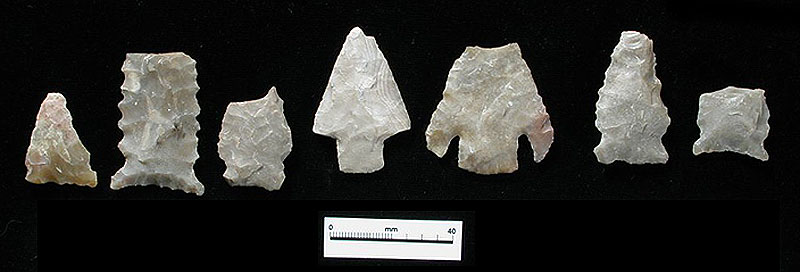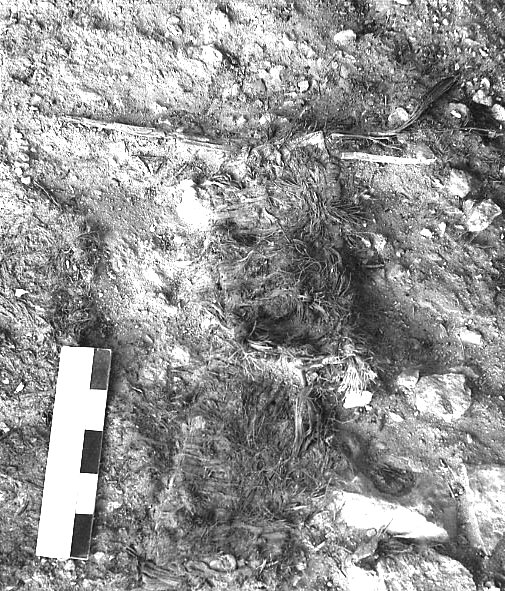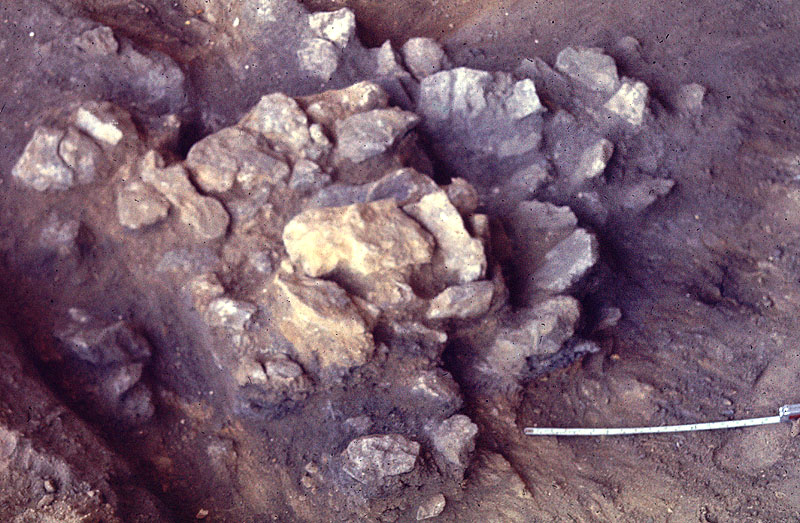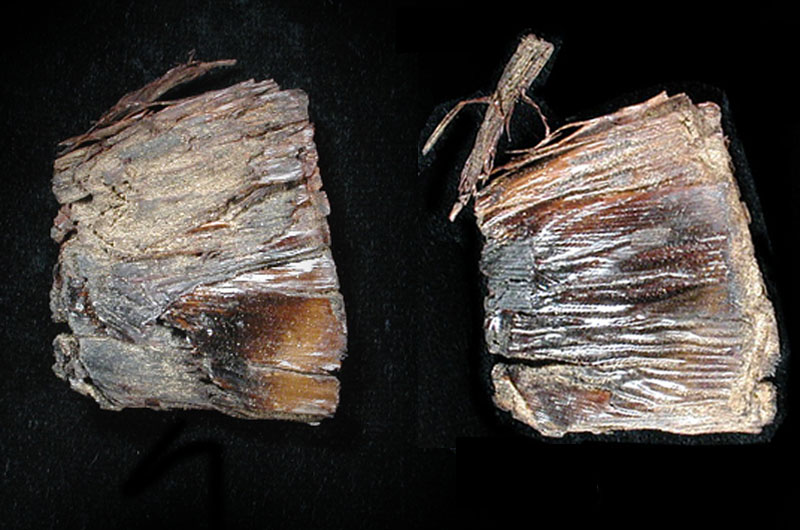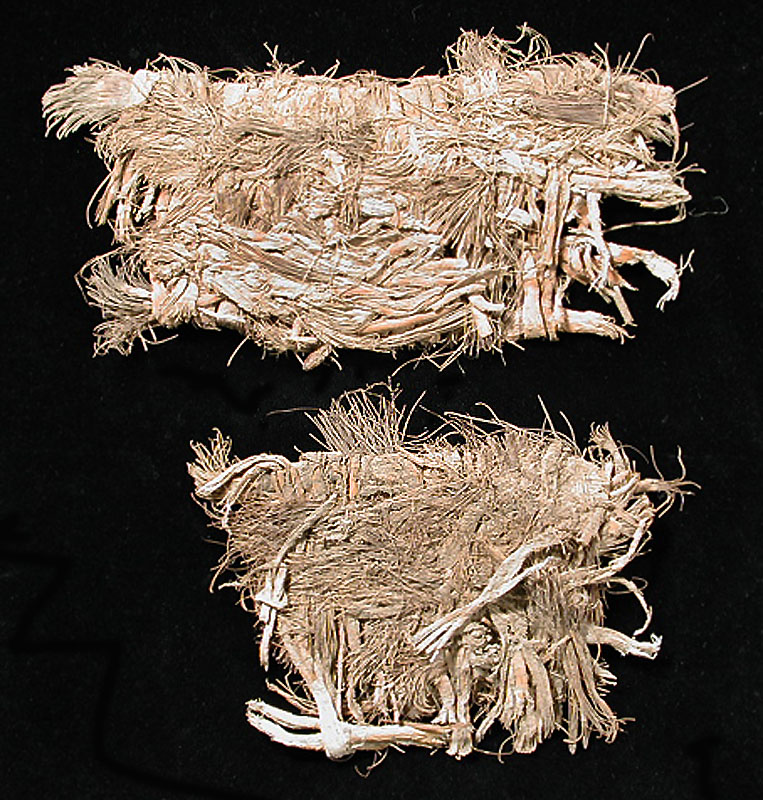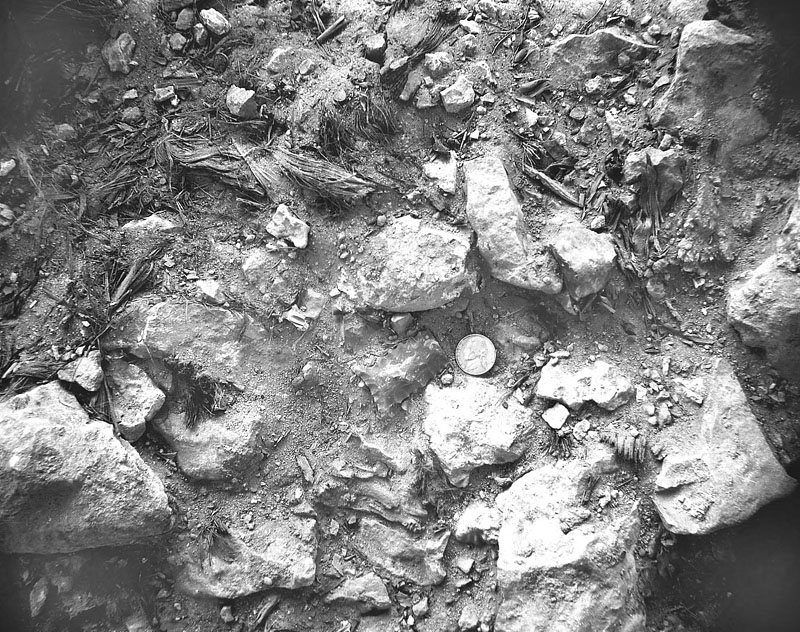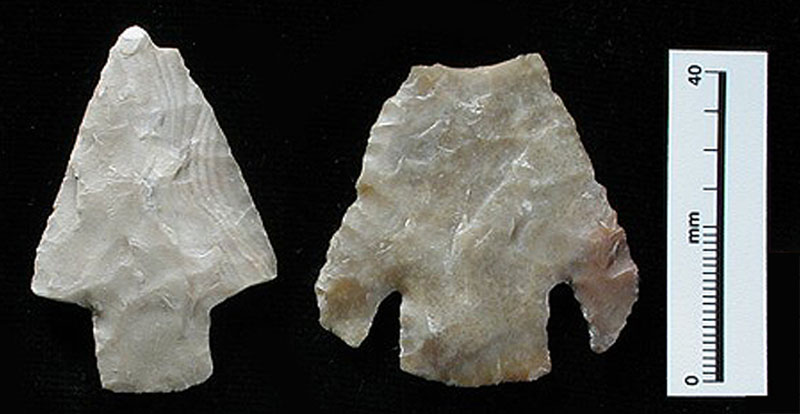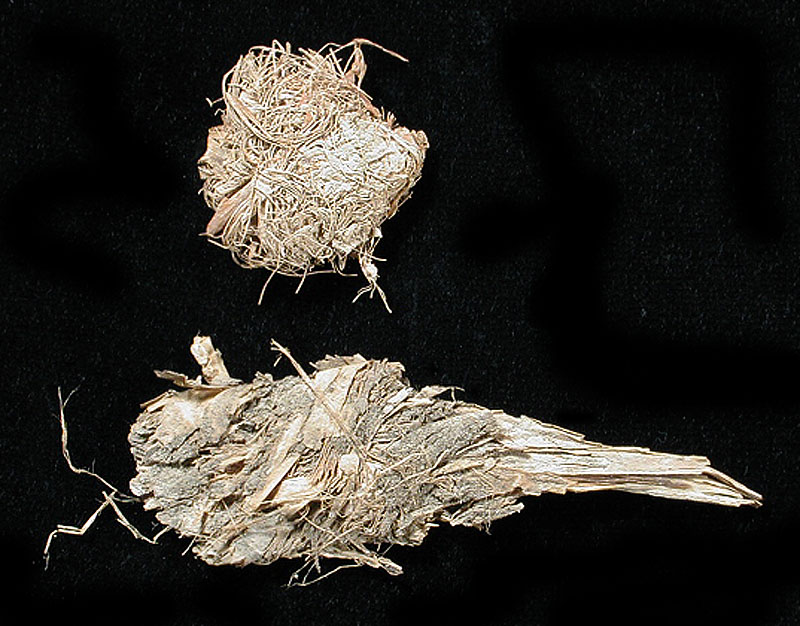 The
Archeology - The Fiber Layer
The
Archeology - The Fiber Layer
Fiber Layer OverviewThe "Fiber Layer" was the uppermost, hence youngest, cultural layer in Bonfire Shelter (save for the scattered goat bones and tin cans on the surface). Rarely more than 3.5inches (9 cm) in thickness, the Fiber Layer was present only in the southern end of the shelter, as can be seen in several of the profile drawings. Unfortunately, there are no good color pictures of this layer; a black and white picture gives some indication of what the layer looked like when first encountered. As the name implies, the Fiber Layer was a dense and compressed accumulation of plant fibers, leaves, and seeds from grasses, lechuguilla, yucca, sotol, and various other plants. While some plant material may have been brought into the shelter by pack rats or other rodents, most of it was clearly the result of human occupation. Along with the plant remains were the broken bones of deer, rabbit, rock squirrel, and fish along with charcoal, ash, fire-cracked stones, and various chipped stone artifacts. Such materials were brought into the cave while people were temporarily living in it about 1350-1650 years ago (about A.D. 350-650). Many other rockshelters and caves in the vicinity have extensive layers of plant materials, showing that people often used these places. But the thinness of the Fiber Layer at Bonfire suggests that people only occasionally visited the rockshelter. Why wasn't Bonfire a favored place to live? While we will never know for certain, there are several factors that make Bonfire less than desirable. For one thing, the floor of the shelter tends to stay damp because the roof blocks at the mouth of the shelter block out most of the sunlight and prevent water from draining out. Because it faces northwest, cold north winds howl through the shelter in the winter. As the archeologists have learned firsthand, Bonfire stays noticeably cooler than the surrounding area, an advantage only in the hot months. But when it is hot, the roof blocks prevent the prevailing southeastern winds from circulating freely in the shelter and trap smoke from cooking fires in the cave, making it hard to breath. All in all, Bonfire would have been relatively cool, dark, dank, and smoky. Not far downstream, however, are several shelters that have ideal orientations for both summer and winter occupations. At Eagle Cave, the tremendously deep layers of fiber and discarded cooking stones provide dramatic evidence that it was long a favored living place. Nonetheless, Bonfire was used as an occupation shelter at least occasionally many centuries after it was last used as a jump site. Most of the Fiber Layer is concentrated at the southern end of the shelter, around the base of the talus cone. This end of the cave is the only part that gets any sun, especially during the winter months when the sun is low in the southern sky. This suggests that perhaps the shelter was occupied during the winter months. Several shallow cooking pits (called "hearths") were found within the Fiber Layer, showing that people sometimes stopped in the shelter to rest and cook something to eat. The most interesting cooking pit is Hearth 6, seen here completely exposed and after it had been partially excavated and cross-sectioned (cut in half). The hearth was reused on at least three different occasions as shown by successive layers of cooking stones, charcoal and ash that were nested together one atop the other. The first and largest layer was a shallow pit or basin about 3.7 ft (1.1 m) in diameter, partially lined with thin limestone slabs. This almost certainly represents a roasting pit or earth oven within which the bulbs or "hearts" of lechuguilla and/or sotol plants were placed in a layered arrangement. This consisted of layers of heated stones and green plants (to create steam and to keep the bulbs clean) capped with a thick layer of earth to hold in the heat. Other evidence in the Fiber Layer of plant roasting comes from cut, burned sotol leaves and several quids. Quids are small wads of fiber representing basal sotol and lechuguilla leaves that have been chewed and spit out, much like artichoke leaves. The last cooking episode, represented by the relatively small concentration of rocks near the center of the overall mass, may have been a simple fire for warmth or cooking. The most exciting find made within the Fiber Layer was a small cache of painted pebbles, three small, flat stones with tantalizingly faded designs. The discovery of the Painted Pebble Cache by young archeologist Elton Prewitt is a story in itself and illustrates how a cautious, meticulous approach in excavating small finds can have big payoffs. But several other interesting artifacts were found. There was a small handful of dart heads, all of them dating from the Late Archaic period, including several Castroville points similar to those found in Bone Bed 3 and several smaller points including examples of the Fairland and Ensor styles. A small pendant found in the layer was made of mussel shell from a freshwater clam, probably plucked from the nearby Rio Grande. Several charred wood fragments fit together to form the hook end of an atlatl or throwing stick (see Glossary entry: atlatl). Two sandals fashioned out of lechuguilla leaves were found at the back of the shelter, one lying beside the other. Although many sandals and sandal fragments have been found in area caves and shelters, they are seldom found in matched pairs. And while both these had been worn-one more than the other-they still had some useful life left in them. Perhaps the sandals were purposefully left behind as a backup pair in favor of a newly fashioned set. If so, the former owner never came back to claim them, and they remained to be found and documented by archeologists more than a thousand years later. |
